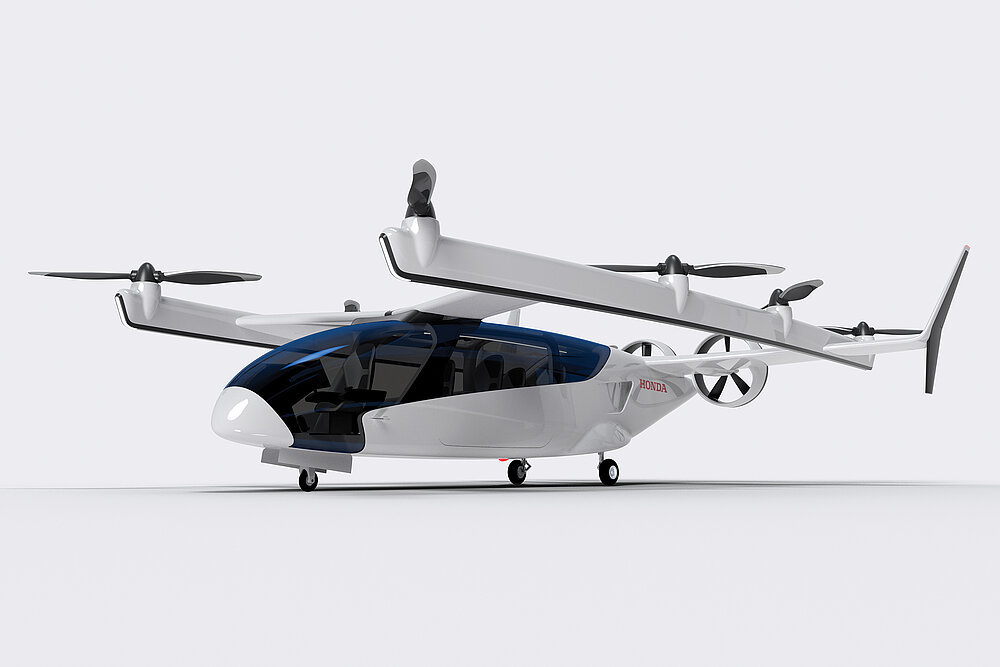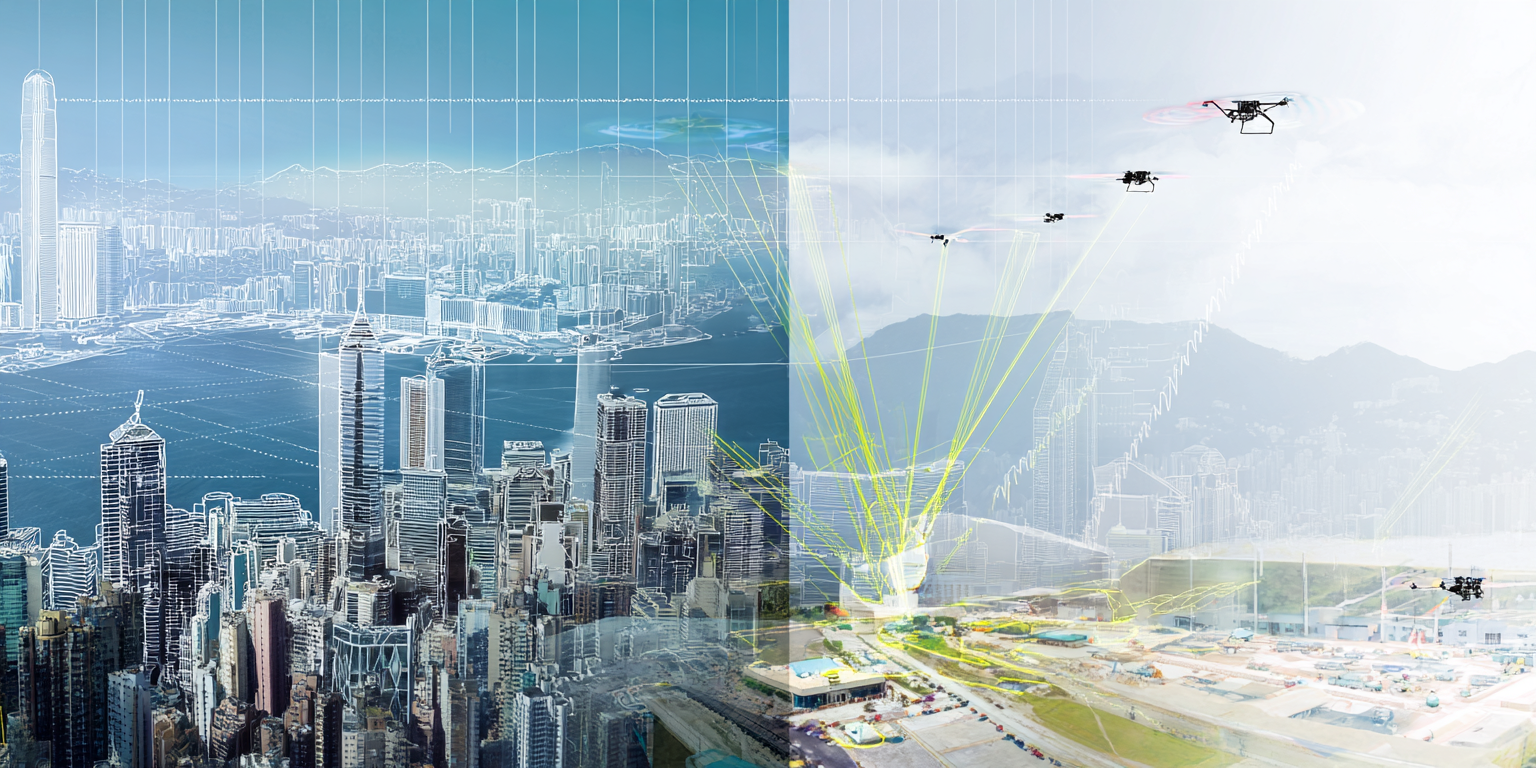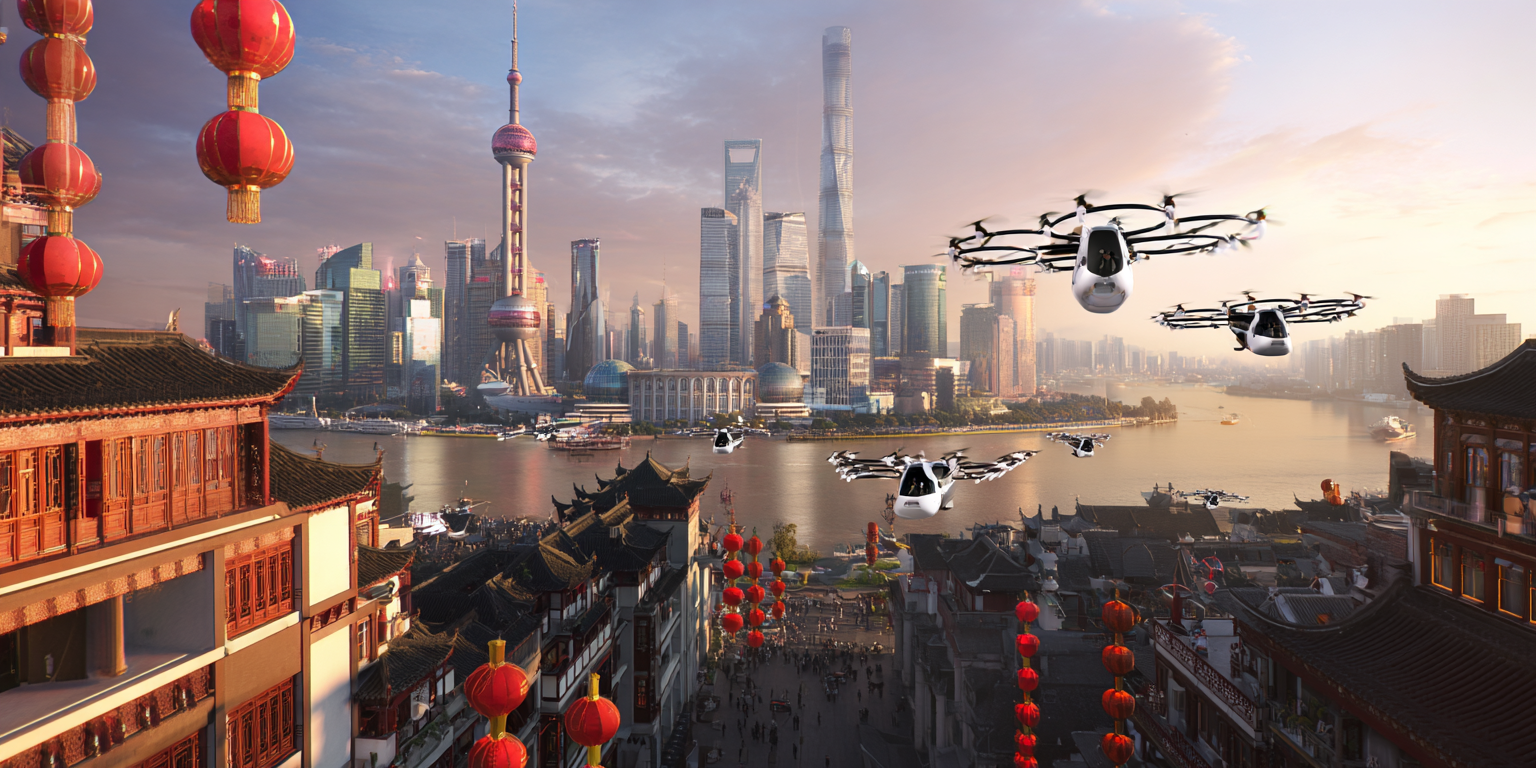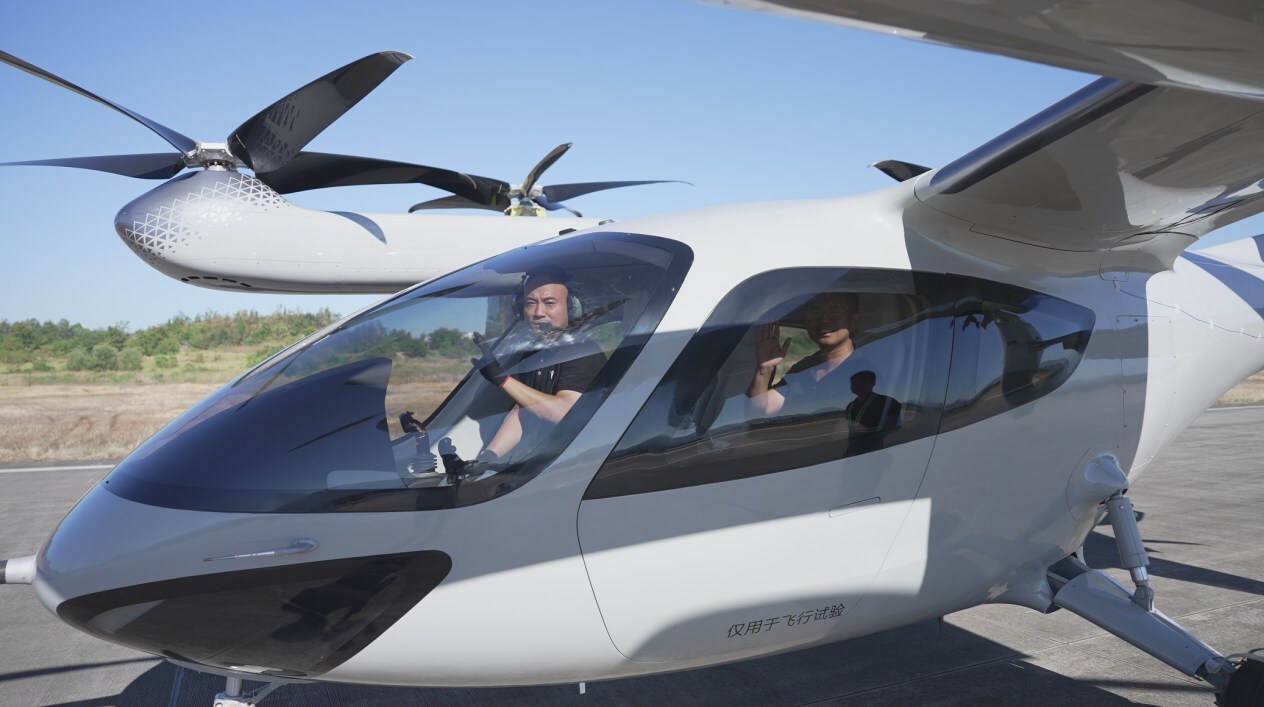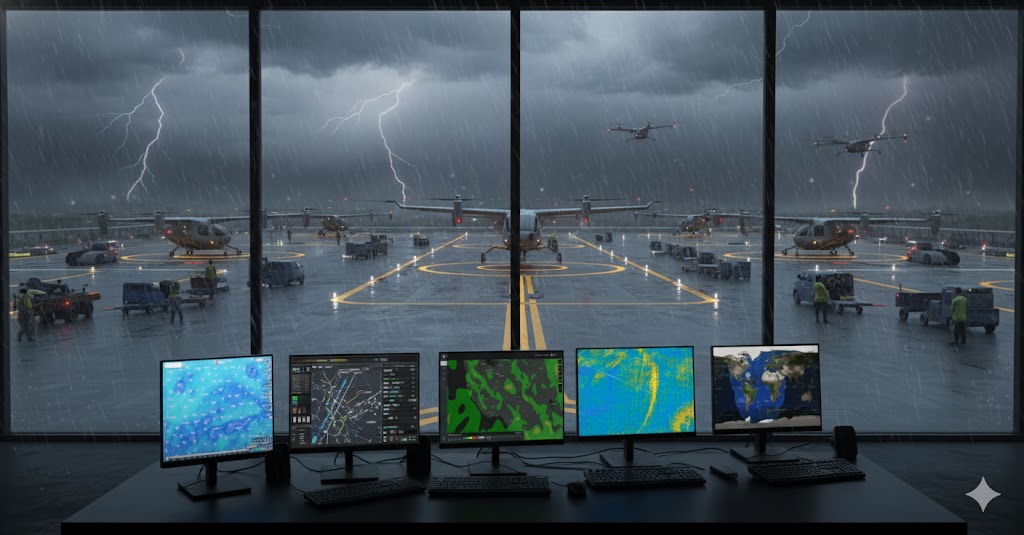Honda has quietly but steadily advanced its electric vertical takeoff and landing aircraft program through 2024 and into 2025, securing crucial Federal Aviation Administration approvals and establishing dedicated research facilities that position the automotive giant as a serious contender in the low-altitude economy.
The most significant development came on October 29, 2024, when the FAA granted Honda Research Institute an experimental special airworthiness certificate for its subscale eVTOL prototype, designated N241RX. This approval enables Honda to conduct demonstration flights through October 2026 at its facility in San Luis Obispo County, California, marking a critical milestone in the program’s progression from concept to reality.
The California site is situated around a preexisting airfield and features two aircraft hangars, an office, a control room, and an outdoor test pad. Honda built this infrastructure to support its transition from computer simulations to real-world flight testing.
Honda’s Design Philosophy and Technical Specifications
Honda’s eVTOL program represents a fundamentally different approach to urban air mobility, one that prioritizes safety and range over the conventional wisdom driving most competitors. While companies like Joby and Archer have adopted tiltrotor designs that allow propellers to switch between providing lift and forward thrust, Honda has deliberately separated these functions. Their aircraft features eight vertical lift propellers mounted on parallel booms for takeoff and landing, as well as two ducted propellers at the rear for forward propulsion.
This lift-plus-cruise configuration reflects Honda’s safety-first philosophy that challenges industry norms. The company argues that tiltrotors create dangerous single points of failure because one rotor must handle both lift and thrust functions. When something goes wrong, you lose multiple critical capabilities at once. Honda’s distributed system provides built-in redundancy, allowing the aircraft to continue flying even if several propellers fail. The design philosophy prioritizes passenger safety over fuel efficiency, a trade-off Honda believes will prove essential for regulatory approval and public acceptance.
The multi-rotor configuration delivers an unexpected bonus beyond safety. Smaller rotor diameters made possible by the distributed lift system produce significantly quieter operation compared to helicopters. This quietness becomes crucial for urban operations where noise pollution concerns frequently block aviation projects. Honda has leveraged decades of aerodynamic expertise to minimize acoustic signatures, potentially solving one of the industry’s most significant regulatory hurdles.
The Hybrid Advantage
Honda's hybrid-electric propulsion system stands as the aircraft’s most significant differentiator in the crowded eVTOL space. While purely electric competitors remain limited to roughly 100-kilometer ranges, Honda’s gas turbine hybrid power unit targets an operational range of 400 kilometers (250 miles). This extended capability transforms the aircraft from an urban taxi alternative into a genuine intercity transportation option, opening entirely different market opportunities.
The hybrid system operates in a series configuration, where the gas turbine generator produces electricity to power electric motors, rather than directly driving propellers. During the vertical takeoff and landing phases, which require maximum power, electricity from both the gas turbine generator and battery storage combine to drive the propulsion system. During cruise flight after reaching altitude, the aircraft operates on motor power while simultaneously recharging the battery pack for future high-demand phases.
Honda draws heavily on its Formula 1 racing expertise to achieve the hybrid system’s remarkable performance specifications. The company utilizes F1 hybrid technology, specifically the MGU-H (Motor Generator Unit Heat) system, which converts exhaust energy into electrical power. The gas turbine generator operates at tens of thousands of RPM with a power density more than ten times higher than Honda’s mass-produced automotive hybrid systems. This racing-derived technology enables the compact, lightweight power unit essential for aviation applications.
The gas turbine itself incorporates Honda’s decades of aero engine development experience. Advanced aerodynamic technologies optimize both the compressor, which pressurizes incoming air for combustion, and the turbine, which extracts power from combustion gases to drive the generator. A sophisticated combustion chamber design ensures efficient fuel burning while maintaining the precise weight and size constraints required by aviation applications.
This technical approach positions Honda uniquely in the eVTOL landscape. Rather than competing solely on urban air taxi routes where range matters less, Honda targets both intracity and intercity transportation markets. The 250-mile range covers major metropolitan corridors, such as Los Angeles to San Francisco or New York to Washington, D.C., without requiring refueling stops. This capability opens business models that pure-electric aircraft cannot address, potentially providing Honda with less competitive market segments during the industry’s early commercialization phase.
Certification Timeline and Regulatory Progress
The October 2024 FAA approval represents the first concrete regulatory milestone for Honda’s program. The exemption covers a subscale test model weighing over 55 pounds, classified as an “R&D subscale model test vehicle”. Testing will be conducted under visual line-of-sight conditions over predetermined, uninhabited areas at the San Luis Obispo facility.
Honda benefits from substantial aircraft certification experience through its HA-420 HondaJet program, which has delivered approximately 250 aircraft since its first certification in 2015. The company’s familiarity with FAA processes provides a significant advantage over startup eVTOL developers lacking aviation industry experience.
While Honda has not published specific certification timelines, industry reports suggest the company is targeting 2030 for commercial certification. This timeline aligns with broader industry expectations for eVTOL commercialization, although it places Honda several years behind leaders such as Joby Aviation and Archer Aviation.
Competitive Position in the Low-Altitude Economy
Honda enters the eVTOL market as automotive manufacturers increasingly recognize the strategic importance of urban air mobility. Toyota has invested nearly $1 billion in Joby Aviation, while Hyundai develops its own Supernal eVTOL through a dedicated subsidiary. Stellantis has partnered with Archer Aviation.
Honda’s approach differs from these strategies in that it develops proprietary technology rather than investing in existing eVTOL companies. This approach carries higher technical and financial risk but offers greater control over the final product and intellectual property.
The company’s hybrid propulsion system targets inter-city transportation, a market segment Honda believes will drive the most significant demand for eVTOL services. While most competitors focus on 25-50-mile urban routes, Honda’s 250-mile range capability could enable new use cases, including regional transportation and cargo logistics.
The low-altitude economy landscape has evolved dramatically through 2024 and 2025, with several aircraft programs reaching critical milestones, while others have adjusted their timelines in response to regulatory realities and market conditions.
Key Program Updates Across the Field
Honda eVTOL The target range stands at 400 kilometers, accommodating one pilot and four passengers. Honda signals a 2030 commercialization aim and continues subscale flight testing under the FAA authorization window through 2026.
Volocopter VoloCity The two-seat aircraft maintains its approximately 22-mile range and roughly 68 mph cruise speed while certification work proceeds. Reports of a 2025-2026 commercial start follow a restructuring and new ownership step; confirm the ownership event and timing before publication.
Lilium Jet Lilium focuses on the seven-seat cabin, accommodating six passengers plus one pilot—current specifications center on approximately 155 miles of range and a similar cruise speed. First service moved to the 2026 to 2027 window while the production‑conforming aircraft and supply chain mature.
Wisk Cora Generation 5 remains an autonomous, two-passenger design with a range of roughly 62 miles and a cruise speed of about 110 mph. No firm entry‑into‑service date yet. The company continues autonomy testing and system safety validation.
Airbus CityAirbus NextGen Airbus presented a full-scale prototype, targeting a one-pilot, three-passenger layout, approximately 50 miles of range, and a cruise speed of roughly 75 mph, with flight testing milestones scheduled for the 2025 to 2026 period ahead of certification workstreams.
EHang EH216‑S EHang holds type certification in China and has begun limited commercial passenger operations there. The aircraft carries two passengers, flies approximately 22 miles, and cruises at a speed of nearly 62 mph under typical conditions. Note that operational constraints, route permissions, and pilotless oversight requirements vary by city.
Joby Aviation S4 Joby leads U.S. certification progress and targets a one‑pilot, four‑passenger configuration, about 100 miles of range, and roughly 175 mph cruise. Public targets indicate initial service in the 2025 to 2026 window, pending completion of FAA type certification and operational approvals.
Archer Aviation Midnight Archer reports a piloted 55‑mile flight milestone and aims for airport‑to‑city early routes. Midnight seats one pilot and four passengers, cruises around 150 mph, and operates efficiently on stage lengths in the 20 to 50-mile band. Commercial timing centers on 2025, pending certification.
Sirius Business Jet Sirius promotes a hydrogen-electric VTOL business jet profile for up to three passengers, offering approximately 1,150 miles of range and a claimed cruise speed of 323 mph. Treat these numbers as aspirational until validated through integrated powertrain ground tests, endurance profiles, and flight test data. Hydrogen infrastructure and certification pathways remain the gating items.
| Aircraft | Passenger Capacity | Range (miles) | Cruise Speed (mph) | Launch Target | Power Type |
| Honda eVTOL | 1 pilot + 4 passengers | 250 | TBD | 2030 | Hybrid (Gas turbine + Electric) |
| Volocopter VoloCity | 2 | 22 | 68 | 2025-2026 | Electric |
| Lilium Jet (7-seater) | 1 pilot + 6 passengers | 155 | 155 | 2026-2027 | Electric |
| Wisk Cora (Gen 5) | 2 | 62 | 110 | TBD | Electric |
| Airbus CityAirbus NextGen | 1 pilot + 3 passengers | 50 | 75 | 2025-2026 | Electric |
| EHang EH216-S | 2 | 22 | 62 | 2025 (Certified) | Electric |
| Sirius Business Jet | Up to 3 | 1150 | 323 | 2025 | Hydrogen-Electric |
| Joby Aviation S4 | 1 pilot + 4 passengers | 100 | 175 | 2025-2026 | Electric |
| Archer Aviation Midnight | 1 pilot + 4 passengers | 20-50 | 150 | 2025 | Electric |
Financial Investment and Strategic Commitment
Honda’s broader 2024 business strategy includes approximately 10 trillion yen in planned investments through fiscal year 2031, with a focus on electrification and new mobility technologies. While specific eVTOL investment figures remain undisclosed, the establishment of dedicated research facilities and multi-year testing programs indicates substantial financial commitment.
The company positions eVTOL development within its “Vision 2030” framework, emphasizing three-dimensional mobility that connects ground and air transportation layers. Honda envisions a mobility ecosystem where eVTOL aircraft integrate with cars, buses, trains, and other transportation modes through dedicated “Honda Mobility Hubs”.
Technical Integration and Formula 1 Heritage
The gas turbine generator incorporates aerodynamic and combustion technologies developed for Honda’s HF120 turbofan engine, used in the HondaJet. This cross-pollination of technologies from different Honda divisions represents a significant technical advantage over pure-play eVTOL startups.
Racing chassis technologies also contribute to the eVTOL’s structural design, as Honda engineers note that the speed ranges and airflow turbulence patterns more closely resemble those of Formula 1 conditions than those of conventional passenger aircraft.
Market Positioning and Future Outlook
Honda’s measured approach to eVTOL development reflects the company’s conservative engineering culture and its focus on long-term market positioning rather than achieving a first-mover advantage. While competitors race toward 2025-2026 commercial launches, Honda appears willing to prioritize technical refinement and regulatory certainty over speed to market.
The company’s hybrid propulsion strategy positions it uniquely for the inter-city transportation segment, potentially avoiding direct competition with urban air taxi services in the initial market phase. This positioning is advantageous as the low-altitude economy matures and demand grows for longer-range applications.
